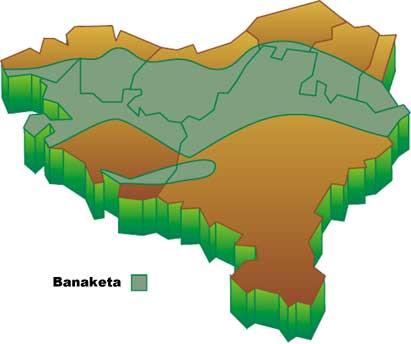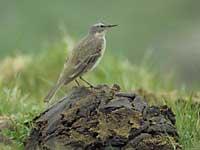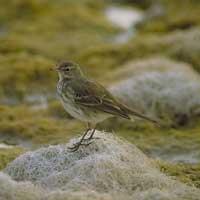In high mountain pastures, mountain chirta

All the ornithology and bird enthusiasts I have known so far have a certain problem that we could call the “most common bird”. Although these people, including the author of the article, can know the majority of birds and/or birds of bright colors over long distances, they have many difficulties in classifying brown passerines.
The reason for this problem, of course, is easy to understand. There are several birds of different species, but similar in color and size. Birds, caresses, pyripedes, cantilevers, tunts, sparrows and brambles could be part of the group of birds that can cause the problem of “birds”. Consequently, and more than when we want to identify any other animal species, we will have to take into account other characteristics in order to classify them. For example, behavior, singing, habitat, time of year, etc.

At first glance it is a brown bird without striking mountain plumage. Its appearance is slender and its tail is quite long. Within this species two subspecies are distinguished: the coastal one ( Anthus spinoletta petrosus) and the mountain one ( Anthus spinoletta spinoletta). In Euskal Herria only the second appears. Therefore, the first starting point for knowing this species is that it does not belong to these animals that appear everywhere.
As the name suggests, the mountain chirta lives on the mountain, in the tall and clean pastures. It likes short grass and treeless areas, and can also be found in rocky mountains and in argomal. Although it can be seen in these places between spring and autumn, towards winter it descends from top to bottom in search of more temperate zones and appears around the wetlands and on the coast. Therefore, it does not have much tendency to migrate, but some experts consider it a partial migrant.
As mentioned above, this passerine has no bright colors. The only color that can be considered eye-catching is that of the feathers on both sides of the tail, which are white. Moreover, both in males and females, the brown and gray colors are excellent for mimicking. The eyebrow is whitish, like the belly and the lower parts. The back is light brown and gray. The chest is usually whitish and pink during breeding. In the winter area, however, it has brown remains on the chest.

This data may not be enough to differentiate itself from other species of shavings, but the mountain chirta is somewhat greater than the others of gender, 16-17 cm, and its weight ranges from 21 to 30 grams. Bill longer and dark. The lightest distinctive is the color of the legs, while in other bran it is clear, in this species it is usually dark. To those who are thinking that it is almost impossible to see the color of the legs to a bird of 16 cm that flees scared by us, and that with it cannot be differentiated, we give you all the reason. However, adding the following features is easier to know this bird.
The typical song of the hill (which is usually called “tsiip”) does not have the same melody as the rest of the huts. The bridal singing of this mummy, as in other birds, is spectacular, in addition to a good listening. Fly down the Earth and sing from top to bottom. The end of this curious flight occurs on the ground or on a small summit. And that, precisely, separates it from the summer exit ( Anthus trivialis), which begins in the tree and ends in it the song. Some alaides can have a similar flight in the heat, but, along with the differences of the songs, the great wings of the birds of this family are different chips.
Breeding takes place between April and July. It nests with mosses, herbs and hairs and is found on the ground or in some of the hidden cracks of the rocky stretch. Inside are placed between 4 and 5 reddish eggs drawn from males and 21 mm. After 2 weeks of heating of the females, the chickens are born, and with the help of the male they graze the pups for 2 more weeks until they are cooked and leave the nest. These chicks look like adults when they leave the nest and 15 days later they just have to abandon the protection of their parents and face life. They begin to grow with a year and have a maximum survival of 9 years.

Exits to the mountain are grouped in pairs or family groups and in winter in small groups. On the other hand, insects, molluscs, crustaceans rise and fall in the soil and walk in search of some seed.
In the Basque Country, the floor of the mountain regions is one of the most abundant species in the sub-alpine and alpine. Its altitude exceeds 1,000 m and in the Pyrenean area it rises to 2,000 m. In the Atlantic region you can descend up to 700 meters if you have a suitable habitat. Continuing south, in the subcantabrian and Mediterranean area we find just over 1,200 meters. As for the distribution of this paleoarctic species in Europe, it appears in the boreal zone and in the temperate and Mediterranean zones: Pyrenees, Cordillera Central, Alps, Apennines and Balkan Mountains.
Working from time to time one of these birds of brown colors, we are able to master the knowledge of these species of difficult identification. But... quiet, I could not know at all the last “brown bird” I had seen, and I only had the opportunity to make sure that the chip of the mountain was nothing but a reality. For a start there is something!
Species: Anthus spinoletta spinoletta |





